Organizational Change Process
This Intervention Overview draws heavily from Building Cultures and Climates for Effective Human Services: Understanding and Improving Organizational Social Contexts with the ARC model, Oxford University Press (2018). This book was written by Drs. Anthony Hemmelgarn and Charles Glisson based on 20+ years of intensive implementation and research experience within child welfare and mental health organizations. Dr. Hemmelgarn consulted with the QIC-WD on this project and served as the ARC specialist in Milwaukee.
ARC is an organizational change process aimed at improving organizational culture and climate and the availability, responsiveness, and continuity of services in human service organizations. It is led by an ARC specialist, who is an external consultant with significant expertise in the model. The ARC specialist plays an essential role in training, facilitating, and coaching all ARC groups. The ARC specialist facilitates and transfers their responsibility of embedding ARC’s tools, processes, approaches, and adaptations to structures to the ARC liaison and ARC teams to continue building organizational capacity, to embed ARC principles, and to alter leadership approaches and styles.
ARC involves three primary strategies:
1) embedding five core principles of effective organizations into all aspects of organizational functioning;
2) installing most (but not necessarily all) of 12 key organizational component tools and processes to improve services in accordance with the five principles; and
3) building mental models and shared beliefs that support the successful application of ARC principles and components.
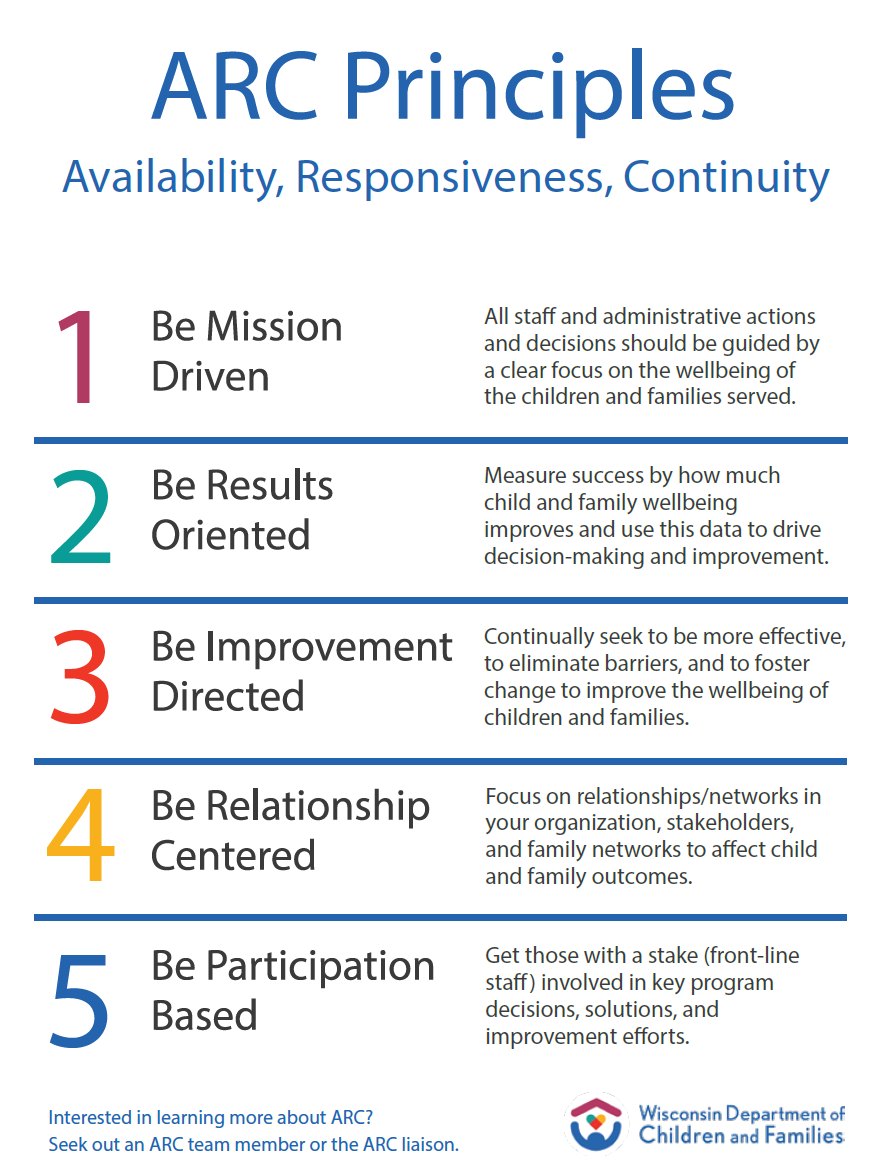 These strategies are employed in three major stages via training and facilitated teamwork involving representatives from all levels of the organization—upper and middle management, supervisors, and frontline staff. In addition, a member of middle or upper management is appointed as an ARC liaison, to serve as an internal change agent for implementing the ARC strategies.
These strategies are employed in three major stages via training and facilitated teamwork involving representatives from all levels of the organization—upper and middle management, supervisors, and frontline staff. In addition, a member of middle or upper management is appointed as an ARC liaison, to serve as an internal change agent for implementing the ARC strategies.
Three Primary Strategies
Strategy 1: Five Core ARC Principles
Central to ARC are embedding the following five principles to help organizations place a priority on being:
- Mission driven vs. rule driven—All staff and administrative actions and decisions should contribute to the well-being¹ of children and families
- Results oriented vs. process oriented—Final staff and program performance are measured by improvements in the well-being of children and families as the most critical outcome
- Improvement directed vs. status quo oriented—Staff and administrators continually seek to become more effective at improving the well-being of children and families through continuous change
- Relationship centered vs. individual centered—Staff and administrators focus on consumer, stakeholder, and internal relationship networks to achieve children and family well-being
- Participation based vs. authority based—Include line-level staff and community stakeholders in key program decisions, such as forming policies, designing strategies, and adopting technologies for improving the well-being of children and families.
Strategy 2: Organizational Component Tools and Processes
The following 12 tools and processes are generally embedded into ARC installation and implementation activities.
- Leadership development: Leaders have an important role in learning about, supporting, and implementing ARC via active involvement in personal and organizational-level changes.
- Personal relationships: Personal relationships are cultivated through enhanced collaboration, joint efforts, and trust. Leaders and managers are supported in promoting information sharing with staff, increasing the frequency and quality of their interactions, and enhancing recognition of individual and team successes.
- Network development: Boundary spanning among leaders, supervisors and frontline staff, and other stakeholders is enhanced to foster collaborative networks for achieving client outcomes.
- Teamwork: The ARC infrastructure and processes focus on team building, both directly and indirectly. Various teaming structures are used as vehicles for change throughout ARC implementation.
- Information and training: Information and training are provided to implement the ARC model, resources on best practices and service models relevant to the organization’s clients, and technical training, e.g., CQI processes, team development, embedding psychological safety that teams can use to address barriers to improve services.
- Feedback/data use: Feedback processes and approaches are embedded to assess and monitor data for barrier identification as well as to monitor ongoing improvement efforts.
- Participative decision making: Organizational culture is enhanced when decision making is less centralized and more participative. ARC entails broader input and influence from all levels of the organization.
- Conflict management: Changes addressed through ARC inevitably lead to conflict at the interpersonal, intra-organizational, and inter-organizational levels, and ARC strategies proactively address this phenomenon.
- Goal setting: Short- and long-term performance goals are established to address challenges related to service improvement, learning, and innovation. Accompanying these goals are clear action plans, timelines, and realistic outcomes to track success.
- Continuous improvement: To enact the principle of continuous improvement, ARC strategies and tools are embedded for the removal of barriers to services quality and client outcomes.
- Job redesign: Some service barriers may be best eliminated by redefining job responsibilities, altering tasks, and requiring new skills for specific positions. ARC teams suggest improvements in how their members approach their work and what responsibilities should be added or deleted as a function of removing barriers.
- Stabilization: ARC is sustained through a variety of mechanisms, including information, ongoing training, planning, and infrastructure development that last beyond the initial intervention.
Strategy 3: Mental Models and Shared Beliefs
ARC uses explanations, Socratic questioning, motivational interviewing, experience sharing, and manualized activities to trigger conscious processing that challenge existing beliefs, assumptions, and inferences that guide decision-making, approaches, and actions taken. A few examples include a focus on psychological safety, openness to change, and leaders’ mental models and attributions around poor staff performance that alter decision making, action, and leadership/staff approaches.
Three ARC Stages
The three primary strategies above are enacted through a series of steps that fall into three major stages of implementation: 1) collaboration, 2) participation, and 3) innovation.
Stage 1: Collaboration
Selecting and Training the ARC Liaison. This position is critical to ARC implementation and sustainability. The ARC liaison is the internal change agent who supports the ARC frontline teams by attending most of their meetings, supporting the implementation of the training they receive, and assisting the team leaders in their facilitation of barrier selection and solution generation. Similarly, the liaison slowly becomes the primary trainer, facilitator, and coach for ongoing ARC within the organization. The ARC liaison received training and coaching from the ARC specialist throughout implementation of the intervention.
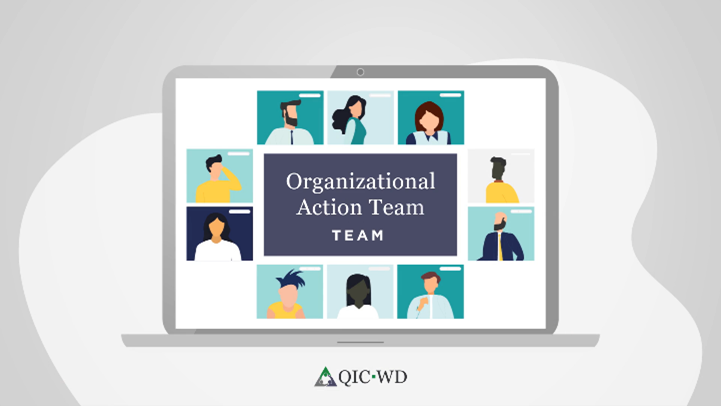 Establishing the Organizational Action Team (OAT) Team. The membership of the OAT is "vertically integrated," which means that staff from frontline to senior managers are included. In particular, the implementation team initially decided that one ARC team leader from each team would attend the OAT meeting; subsequently, both team leaders per team were invited to participate. A top leader, several program managers, and support individuals such as the agency’s training specialist and data specialist were engaged as well. The OAT met monthly to review, support, and collaborate with ARC teams to address ARC team proposals, foster needed relationships to support ARC work, and to implement changes in practices, systems, or communications to enhance the organization’s success. The OAT then helped establish implementation teams for specific initiatives, leveraging internal resources and supports. A majority of DMCPS leadership joined the OAT. This allowed both leaders and traditional OAT members the opportunity to jointly gain an overall understanding of ARC.
Establishing the Organizational Action Team (OAT) Team. The membership of the OAT is "vertically integrated," which means that staff from frontline to senior managers are included. In particular, the implementation team initially decided that one ARC team leader from each team would attend the OAT meeting; subsequently, both team leaders per team were invited to participate. A top leader, several program managers, and support individuals such as the agency’s training specialist and data specialist were engaged as well. The OAT met monthly to review, support, and collaborate with ARC teams to address ARC team proposals, foster needed relationships to support ARC work, and to implement changes in practices, systems, or communications to enhance the organization’s success. The OAT then helped establish implementation teams for specific initiatives, leveraging internal resources and supports. A majority of DMCPS leadership joined the OAT. This allowed both leaders and traditional OAT members the opportunity to jointly gain an overall understanding of ARC.
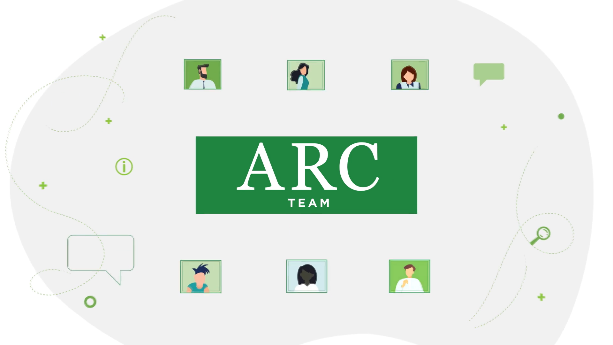 Establishing the ARC Teams. For the first three established ARC teams, DMCPS recruited staff who were supervisors or mentors to lead. In addition, DMCPS decided to implement a co-team leader structure for each ARC team, which allowed for sharing leadership roles, cross-training, and continuity in case of turnover. Each team had approximately six to eight frontline staff members.
Establishing the ARC Teams. For the first three established ARC teams, DMCPS recruited staff who were supervisors or mentors to lead. In addition, DMCPS decided to implement a co-team leader structure for each ARC team, which allowed for sharing leadership roles, cross-training, and continuity in case of turnover. Each team had approximately six to eight frontline staff members.
Stage 2: Participation
ARC Team Leader Training. The ARC specialist delivered six 3-hour ARC trainings over six months. Using a train-the-trainer methodology, the ARC team leaders then facilitated their ARC team meetings based on that month’s content.
OAT Training. The ARC specialist also facilitated trainings for the OAT members to support their role in assessing and supporting change initiatives that emanated from the ARC teams.
ARC Liaison Supports. The ARC liaison provided monthly training and consultation through a mix of group training, conference calls, and attendance at ARC team meetings. The ARC liaison also established a peer support process.
ARC Team Leader Coaching. The ARC specialist and liaison coached ARC team leaders on facilitating the use of ARC within their teams, maintaining energy within their teams, and working in collaboration with management to help eliminate the barriers identified by their teams. The liaison also supported team leaders in tracking their team’s progress and providing regular feedback on their team’s use of ARC. Most importantly, they continually push their teams to operate in accordance with the ARC principles
Stage 3: Innovation
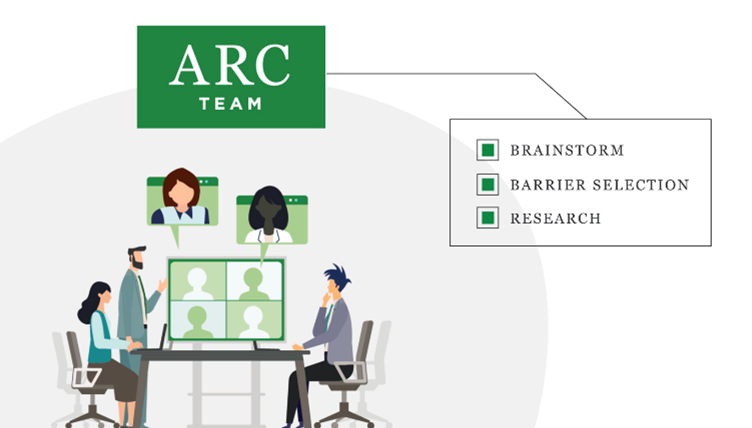 ARC Team Meetings. The teams met on an average of every three weeks for approximately six to eight months to develop their continuous improvement proposal. Guided by ARC principles, the ARC teams developed carefully planned written proposals to improve practices and policies that were submitted directly to the OAT. ARC teams brainstormed challenges, completed root cause analyses, and generated solutions to the selected challenge, integrating the expertise and experience of the frontline staff. More specifically, the teams developed proposals to 1) improve a standard that allowed caseworkers to not complete a full investigation based on their initial contact with families, 2) create a more transparent and fair case assignment log and 3) develop a field support specialist function.
ARC Team Meetings. The teams met on an average of every three weeks for approximately six to eight months to develop their continuous improvement proposal. Guided by ARC principles, the ARC teams developed carefully planned written proposals to improve practices and policies that were submitted directly to the OAT. ARC teams brainstormed challenges, completed root cause analyses, and generated solutions to the selected challenge, integrating the expertise and experience of the frontline staff. More specifically, the teams developed proposals to 1) improve a standard that allowed caseworkers to not complete a full investigation based on their initial contact with families, 2) create a more transparent and fair case assignment log and 3) develop a field support specialist function.
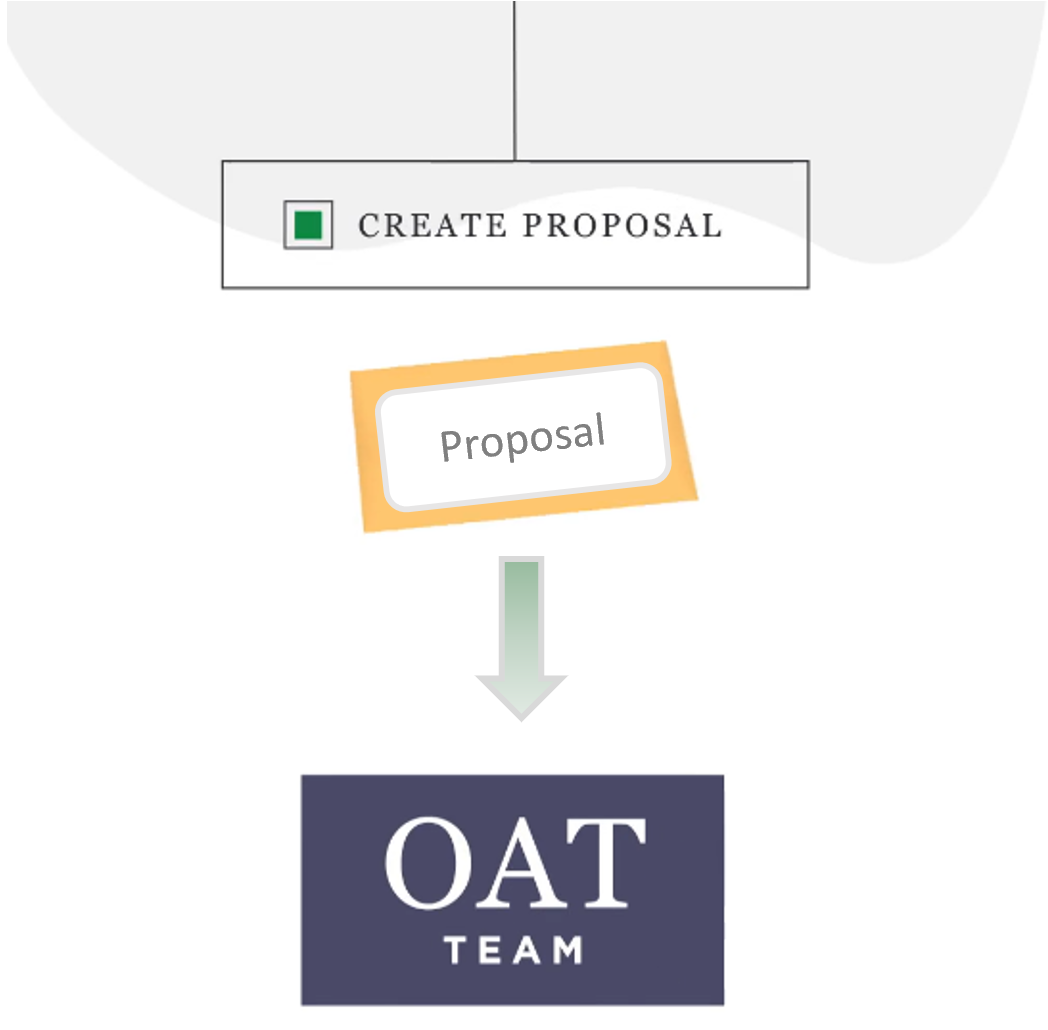 OAT Team Meetings. The OAT reviewed, asked for improvements to, and ultimately approved ARC team proposals. The OAT then helped establish an implementation team for the specific initiative, leveraging internal resources and supports. The OAT met every month for approximately 60–90 minutes.
OAT Team Meetings. The OAT reviewed, asked for improvements to, and ultimately approved ARC team proposals. The OAT then helped establish an implementation team for the specific initiative, leveraging internal resources and supports. The OAT met every month for approximately 60–90 minutes.
Adaptations
Given the size of DMCPS, and that ARC was selected based on an 18-month needs assessment process that had already been conducted by the QIC-WD, there were several adaptations to the ARC process.
ARC teaming structures were adapted. The traditional ARC upper leadership team was not formally established for two main reasons: 1) concerns for redundancy of work completed by the DMCPS implementation team, the QIC-WD, and soon to be established Organizational Action Team (OAT); and 2) expected overlap of leadership given the size of the agency. This resulted in a swift transition of critical members of the QIC-WD’s implementation team, including leadership, into the OAT. OAT meeting times were reduced by 33% given time constraints, and materials were redesigned to expedite development of OAT members, including upper leadership. These changes reduced leadership’s intensive development and work around ARC’s principles, such as in-depth examination of implicit theories and beliefs held by leadership that interfere with the ARC principles, organizational systems not operating in parallel to these principles, and an in-depth exploration of the agency’s external constraints that interfere principles enactment.
Frontline ARC Teams were developed as usual with four alterations. First, newly created teams, not existing program teams, were developed to enhance cross-program interaction and relationship development. Second, a co-facilitated team leader model for each ARC team (vs. just one leader) was established, to guard against high levels of existing turnover. Third, frontline team members who participated in a previous ARC team were invited, with vetting by the ARC Liaison, to become potential ARC team leaders for subsequent teams. Lastly, an ARC Team Leader learning community was developed in the final stages of ARC to help strengthen ARC implementation success and sustainability.
ARC components Adaptation. Core components such as training, continuous improvement, participative decision making, and team building were applied as is typical in most ARC interventions. Initial levels of leadership development were greatly reduced and replaced with efforts to inject development when possible throughout ARC implementation. In turn, initial relationship development between upper leadership and the ARC specialist was reduced within ARC’s collaboration stage. Initial and ongoing work with feedback and data use was reduced given QIC-WD’s extensive work in this area, leading to a primary focus by the ARC specialist on data application within frontline ARC teams, versus broader work on data system training and changes within the organization. Similarly, network development focused on building stronger relationships within the organization, versus additional work with external stakeholders, given a strong need in this area identified by the QIC-WD findings. Conflict management was requested to lie primarily in the hands of the ARC liaison who had considerable experience and skill in this area. ARC supported conflict management via its work in embedding psychological safety across teams, leaders, and organizational members.
Other adaptations. Loss of the ARC liaison in year one required the ARC specialist to regain temporary facilitation of ARC teams and to help in training the new ARC liaison. Additional training materials and aids were further developed to ensure continuity for new ARC liaisons when necessary. Similarly, adaptations to ARC materials, implementation intensity, length of ARC, and onsite meeting workarounds were made.
This video highlights the experience of those involved in the ARC intervention as implemented by the Division of Milwaukee Child Protective Services.